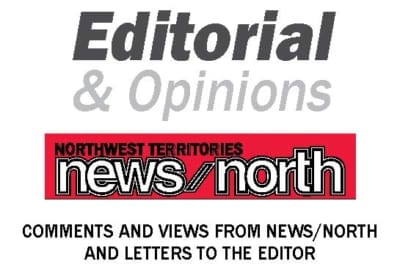The issue: Northern addictions
We say: Need more Northern care
The saga for an addictions treatment centre in the NWT rages on, it has found a new champion in Monfwi MLA Jackson Lafferty.
At length since the start of the recent sitting of the legislative assembly, Lafferty has outlined the will for an in-territory addictions treatment facility and the lack of will from leading politicians to complete the project.
"When can Northerners expect an end to the ill-advised practice of sending Northerners to southern institutions for addictions recovery?" he asked on Oct. 16.
Health Minister Julie Green has said that the project will cost too much money to implement and the territory does not have enough trained individuals to staff such a centre.
This years budget for treatment addiction is $2.3 million to spend on sending afflicted residents south to any one of six different facilities that can accommodate patients with proper physical distancing.
Green's main example of a failed Northern treatment centre is Nats'ejee Keh Treatment Centre in Hay River, which closed in 2013. This facility was the second addictions treatment centre to close in the NWT since 1991. Green cited a lack of reliable staffing and not being able to admit patients at any time as the main reasons for its failure.
But having a by-Northerners-for-Northerners treatment facility is too important to dismiss based on a purely, or at least primarily, financial evaluation.
Two historical arguments against placing NWT is too small to support its own addictions treatment facility and it would be better for patients to be removed from the places and people that put them in situations where it's more likely their recovery will be set back or derailed entirely.
But there's also a strong argument for NWT residents, in particular individuals who identify as Indigenous, being able to treat their addictions in a more traditional setting.
The 18th Legislative Assembly's Minister of Health Glen Abernethy said that although it is more cost effective to send patients south, after-care was still lacking in the North.
Green said her department is now focusing on aftercare and has made $1.8 million available to on-the-land healing programs with each Indigenous Government Organization (IGO) able to receive $125,000. Only a small fraction of that money has been used though and $1.3 million is still up for grabs.
If this new government's idea of promoting after-care is to simply throw relatively small amounts of money at the problem, it doesn't seem to be working. The term Band Aid comes to mind. But it begs the question: is it that so few organizations have accessed the funding for on-the-land healing camps or after-care programs?
What may be needed is a more direct partnership with the Department of Health and Social Services – emphasis on the social services – which can be more than just a piggy bank and provide administrative guidance or support reaching those who need it most.
Lafferty demanded the facility in terms of the Truth and Reconciliation Commission's calls to action "to address the physical, mental, emotional and spiritual harms caused by residential schools."
He himself saw the ramifications of not having after-care and in the assembly described an individual he knew who returned from treatment in the south, only to end up in the streets again and dying. "These are real life problems," he said.
The former Nats'ejee Keh Treatment Centre site, which got a new lease on life as a Dene wellness centre in 2019, should serve as an template for a successful grassroots healing operation in the NWT.
Where there is a will, there is a way. And there appears to be that will on the Kahtlodeeche First Nation near Hay River. Why is this political will nowhere to be found in the Legislature in Yellowknife?